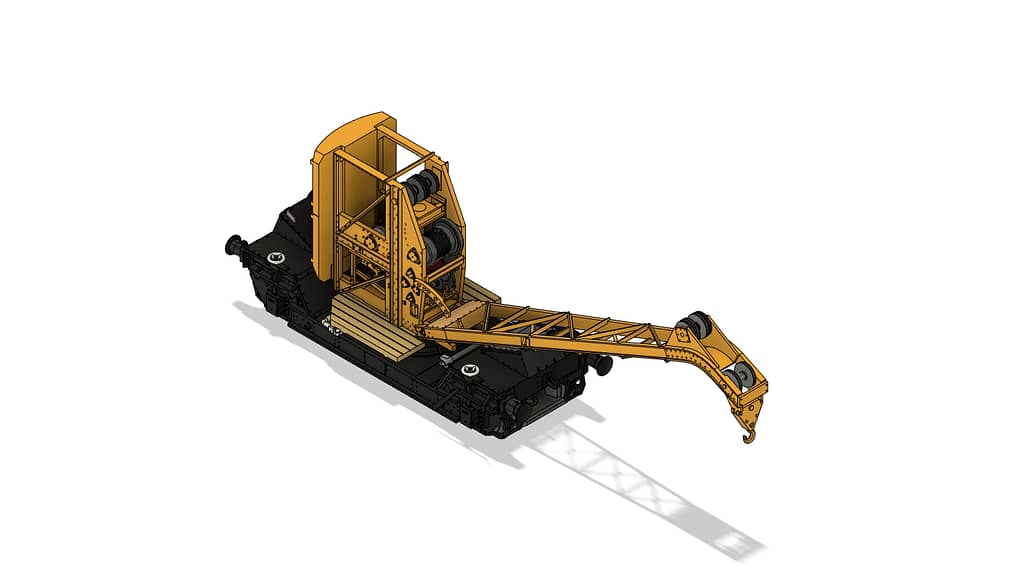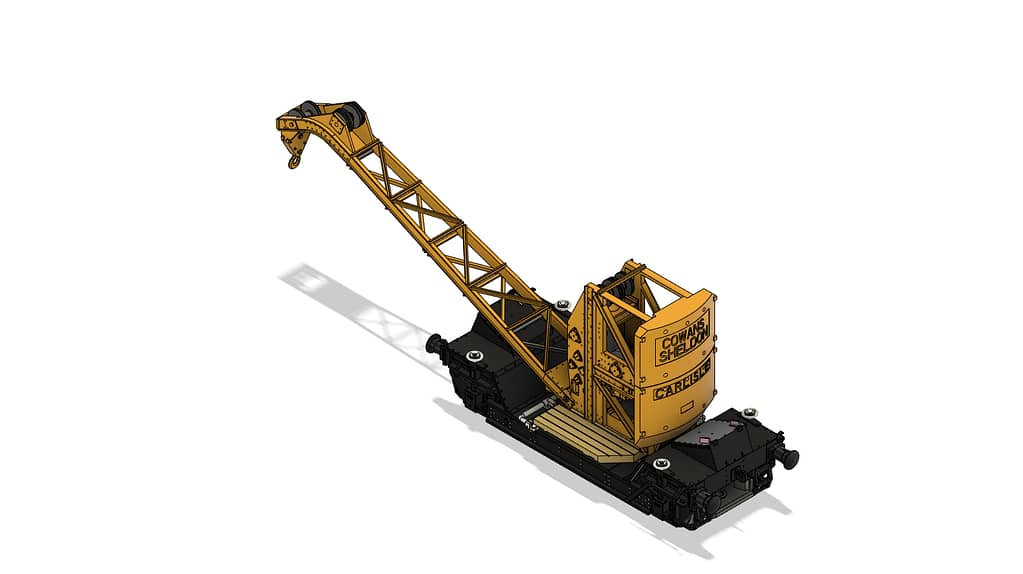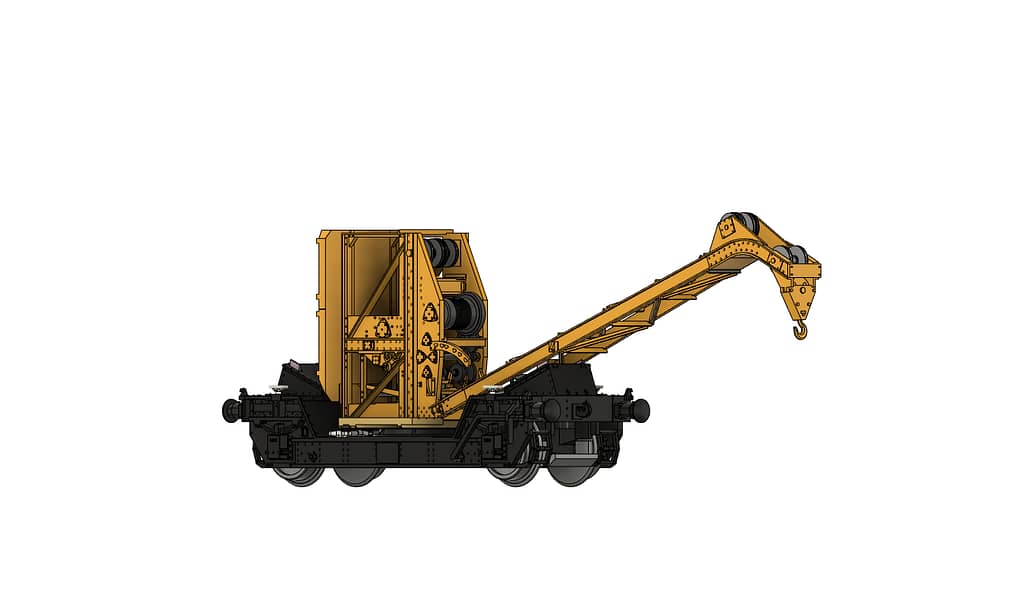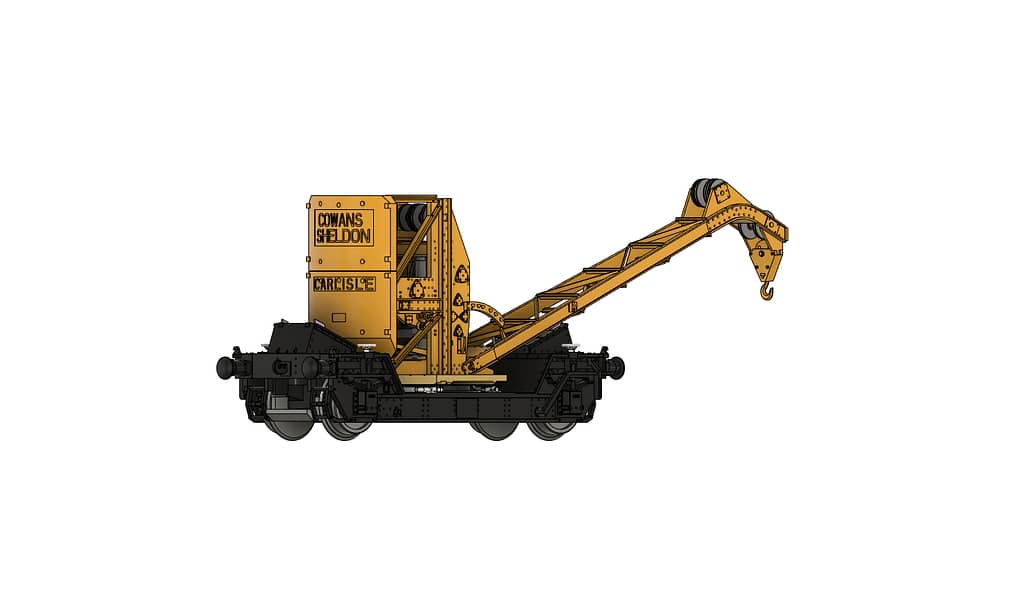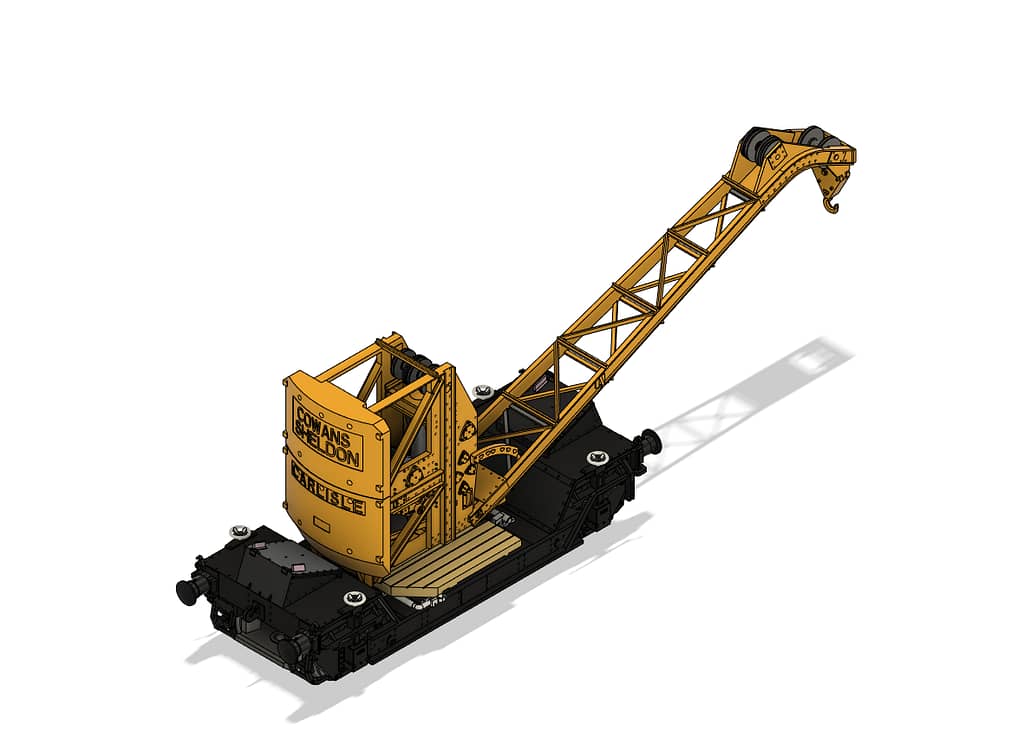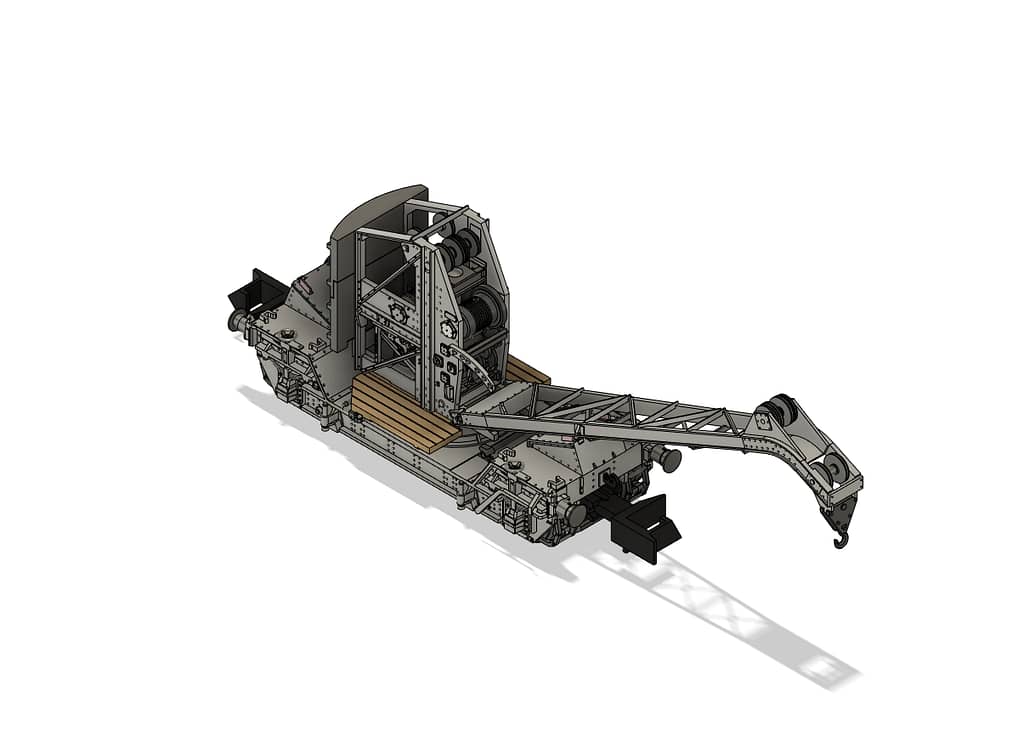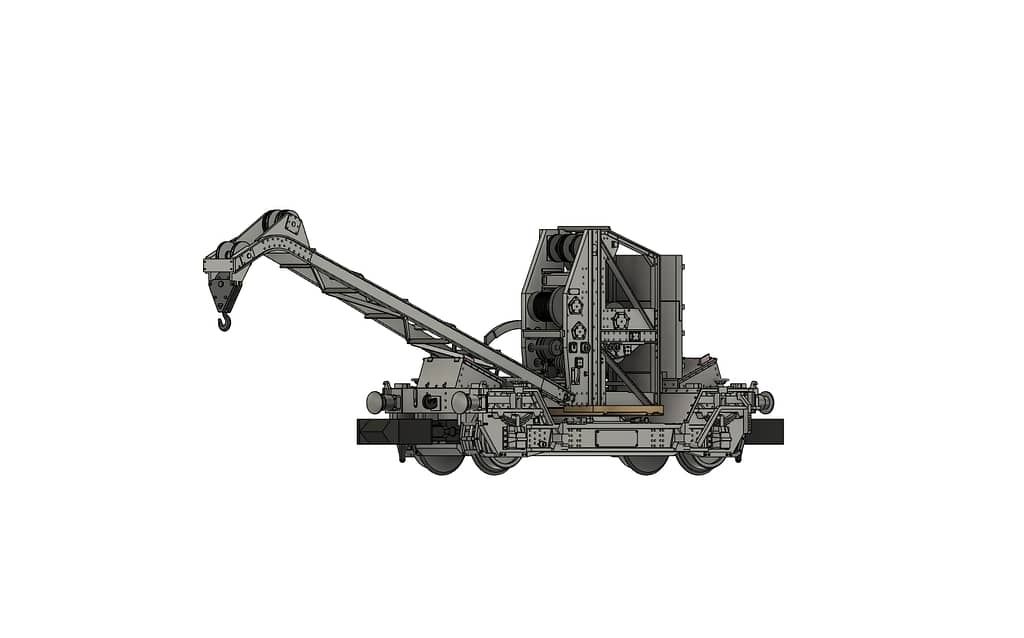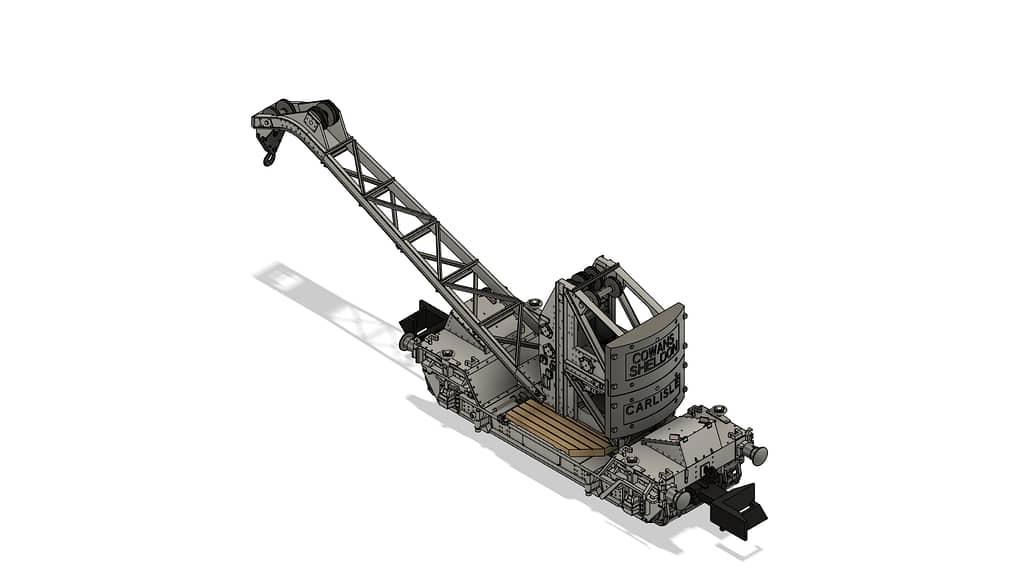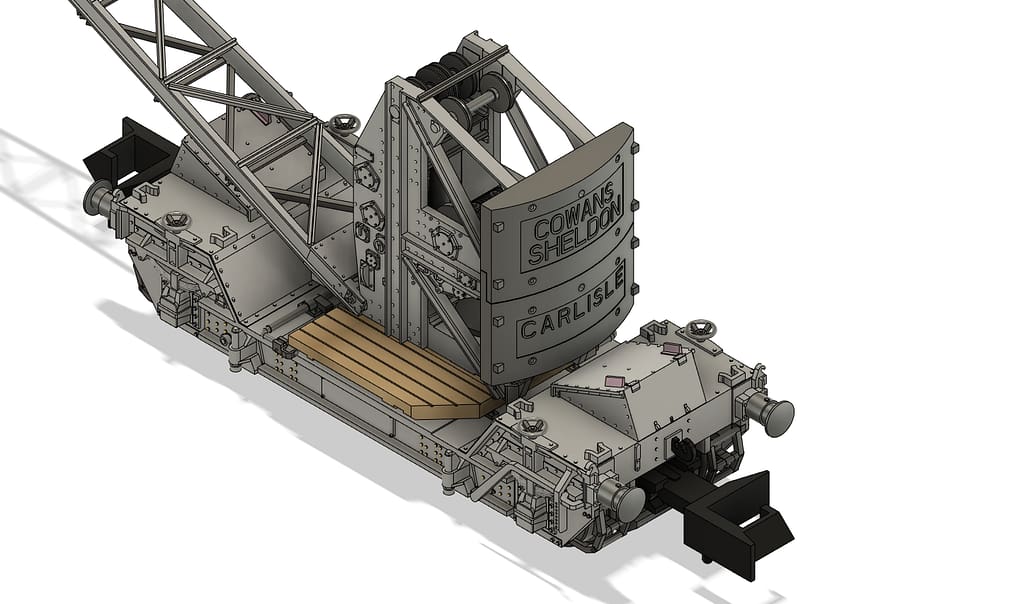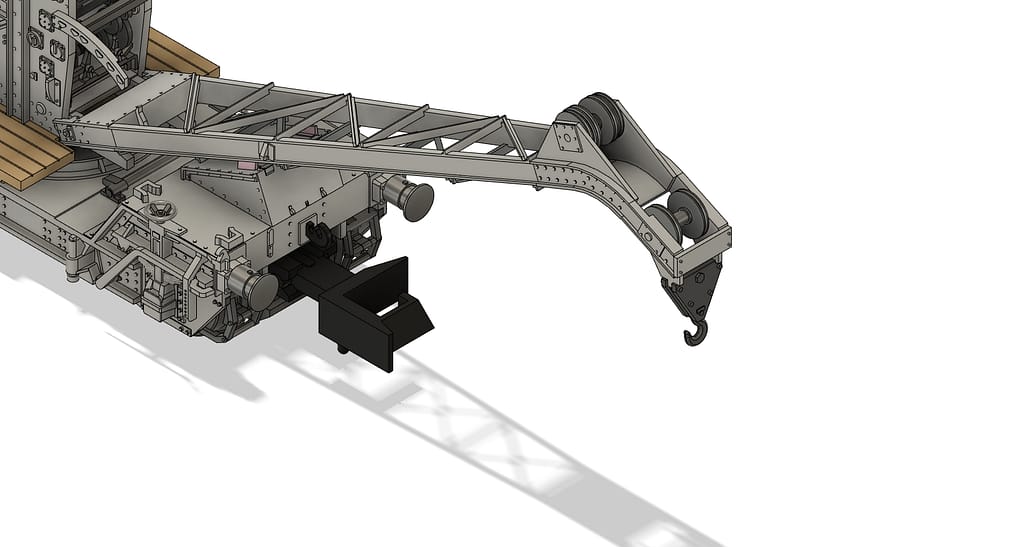The NGS is pleased to announce its next Ready-To-Run (RTR) model following the Ferryvan, the Cowans Sheldon 6.5 and 10 ton travelling hand crane.
Prototype History
Cowans Sheldon built prototype 6.5 ton hand crane No. M1 in 1935 for the LMS and several production 6.5 and 10 ton rail mounted travelling cranes during the Second World War, primarily for the LMS, but also a smaller number for the SR. These passed to British Railways at Nationalisation and could be found in yards, works and sidings all over the network.
The prototype crane consisted of a conventional yard crane design mounted on a four-wheel steel well wagon. The adoption of a tall 6 foot wide 9 ton counterweight avoided obstructing the adjacent track whilst working and cleared any lineside structures. The crane could lift a maximum load of 6.5 tons when operating ‘on rail’. When in running condition, the jib was secured to the chassis using bracing and the maximum axle load was limited to 14 tons. Some cranes were provided with outrigger jacks and a heavier counterweight and were thus uprated to 10 tons capacity.
Rather than the jib resting on a runner wagon, the crane incorporated a tool box/inclined jib rest to which the jib would be restrained using tie down turnbuckles. The cranes worked with match wagons which carried spare lifting tackle, tooling etc. These were of widely different types, often local conversions and thus unique to the crane with which they were paired. The cranes were unfitted (handbrake only) and were not self-propelled. All crane operations were performed by hand using the winding gear contained on the crane superstructure.
Initially, the cranes were used during World War 2 in temporary goods yards for Operation Overlord, and to assist in emergency repairs following air raids. They were also utilised in smaller or remote yards and sidings for general lifting tasks where a yard crane was not provided. With the advent of ISO containerisation, this work largely disappeared and by 1965 BR was concerned about the number of accidents involving the cranes. Some cranes were withdrawn whilst a number found a new lease of life in wagon maintenance depots and sidings where they were often used for the fitting and removal of wheelsets with some lasting in BR service until the 1990s. Some examples found their way to preserved railways where they can be seen today.
The major differences between a 6.5 and 10 ton crane were the inclusion of outrigger jacks and different sized counterweights. There were also axle box differences between the LMS, and SR types and some cranes showed differences between an angled and a straight upper superstructure frame. These major visual detail aspects varied from crane to crane and each will be correctly represented on the model.
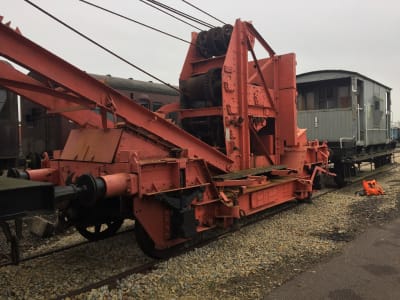
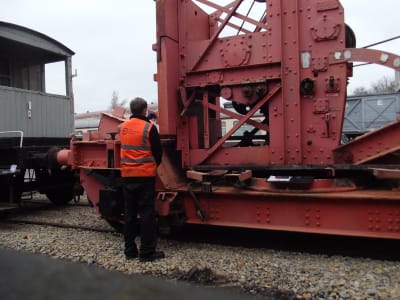
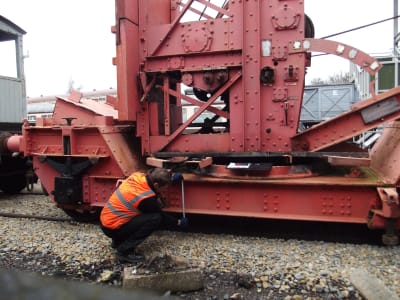
The Model
The Society plans to offer the crane in both 6.5 and 10t variants and in a number of liveries to span a variety of eras from Era 3 to era 9.
The model will be fully detailed with all usual refinements include fine moulding, etched detail, RP25 wheelsets, NEM coupler pockets and will have a poseable jib and rotating superstructure.
Owing to the wide variety of wagons used, many already existing in RTR and kit forms, the model will be offered without a match wagon, leaving the choice up to the modeller.
A detailed survey of preserved Crane ADM27 at the Buckinghamshire Railway Centre has been undertaken, and a full set of Cowans Sheldon Works drawings has been obtained to assist in making the model as accurate as possible.
The CAD model for the crane has been produced and approved. The model is currently at the tooling stage and is tentatively anticipated for release sometime in 2024 and, barring any unforeseen occurrences, it is similarly anticipated that the price will be £51 per model, including VAT.
To assist the Society in covering interim payments required by the manufacturer in respect of setting-up and development costs, members are invited to indicate their choice of livery or liveries and to make a contribution towards the required payments in the sum of £15 per livery indicated. On receipt of the models the Society will reserve the liveried models indicated and offer them for sale to the contributing members at a reduced price, which will equate to the general selling price per model, less £20 (i.e. less the £15 contribution plus an additional £5 discount). P&p will apply at the rate appropriate to the gross selling price at the time (i.e. before any deduction or discount).
Follow the link below to use the contribution facility on the Society Shop/Membership website. Remember, only members may purchase models and kits from the NGS.
Updated proposed liveries
| Coding | Livery | Era | Rating | Region |
|---|---|---|---|---|
| NGSR0791 | LMS grey | 3 | 6.5t | LMR |
| NGSR0792 | SR grey | 3 | 10t | SR |
| NGSR0793 | LMS grey, BR markings | 4/5/6 | 10t | LMR |
| NDSR0794 | SR Grey, BR markings | 4/5/6 | 10t | SR |
| NGSR0795 | Light grey with wasp stripes | 5/6 | 6.5t | LMR |
| NGSR0796 | BR blue grey with yellow wasp stripes some parts light grey | 7/8 | 10t | LMR |
| NGSR0797 | Blue Grey with Wasp Stripes and some parts picked out in yellow | 7/8 | 6.5t | WR |
| NGSR0798 | Grey with bauxite jib | 7/8 | 6.5t | LMR |
| NGSR0799 | Yellow with wasp stripes | 7/8 | 6.5t | LMR |
| NGSR079A | Yellow with wasp stripes | 7/8/9 | 10t | LMR |
